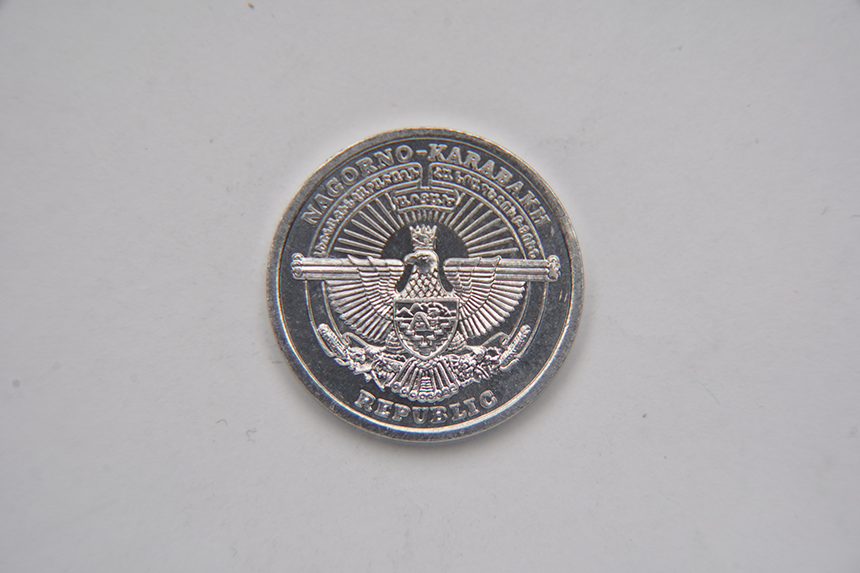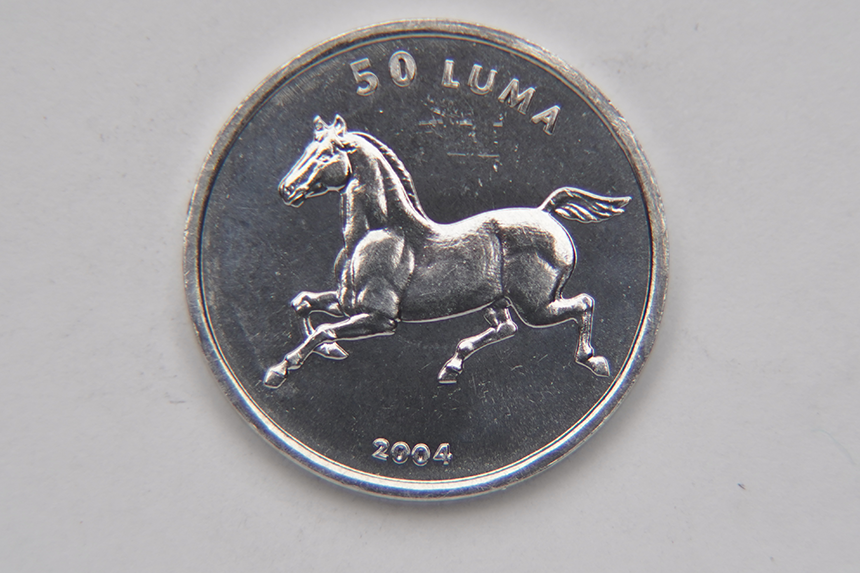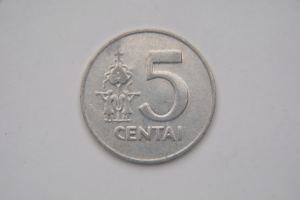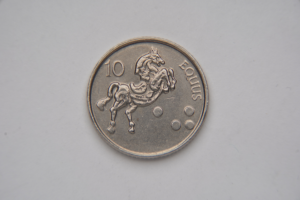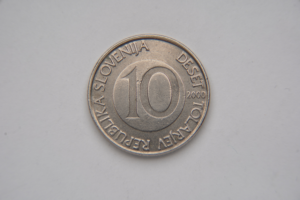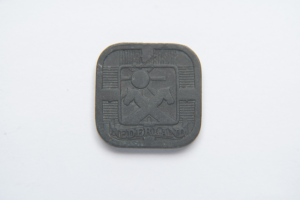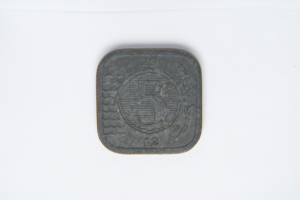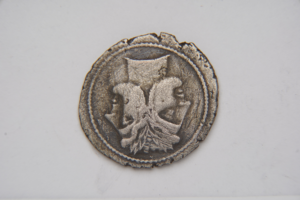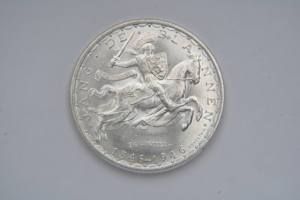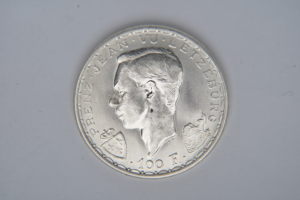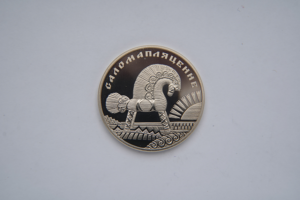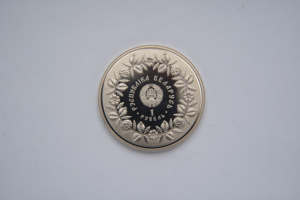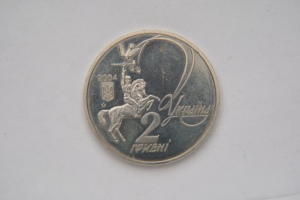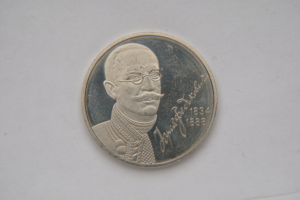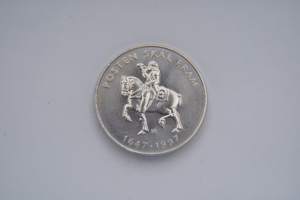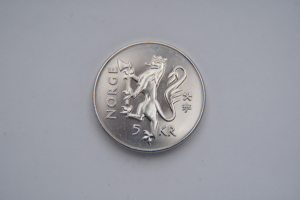Karabakh horse – history of breed.
Obverse of the coin.
Big size of reverse of the coin.
More information
Karabakh horse – history of breed.
So here we have the Nagorno-Karabakhian lume, nominal - 50. The year of issue of this coin is 2004.
The breed acquired its present characteristics during the 18th and 19th centuries. In Transcaucasia, Karabakh Khanate was known as a place for breeding of horses. Factory of the khanate was the main farm of purebred horses, which were not held for sale, but were only presented as gifts. There is some evidence that Ibrahim-Khalil (1763–1806), ruler of the Karabakh Khanate, had a herd numbering 3,000 - 4,000.
During the 19th century, Karabakhs became popular in Europe. An English company purchased 60 Karabakh mares from Mehdigulu Khan Javanshir, the last ruler of the Karabakh Khanate, at a large 1823 sale.
The Karabakh played a significant role in the formation of the Russian Don breed. The heir of Russian general Valerian Madatov sold all his horses, including 200 Karabakh mares, to a breeder in the Don region in 1836. The mares were used to improve the Russian Don into the 20th century.
Karabakh numbers sharply decreased again during the early 20th century, primarily because of civil and ethnic wars in the Caucasus in general and the Karabakh region in particular. The breeding enterprise established by the Karabakh khans and developed by their heirs was destroyed in 1905. Karabakhs were bred to other breeds, resulting in changes including a reduction in size.
Date
2004.
Culture
Nagorno-Karabakh.
Medium
Aluminum.
Dimensions
0.95x19.8x1.4.
Classification
Coin.


